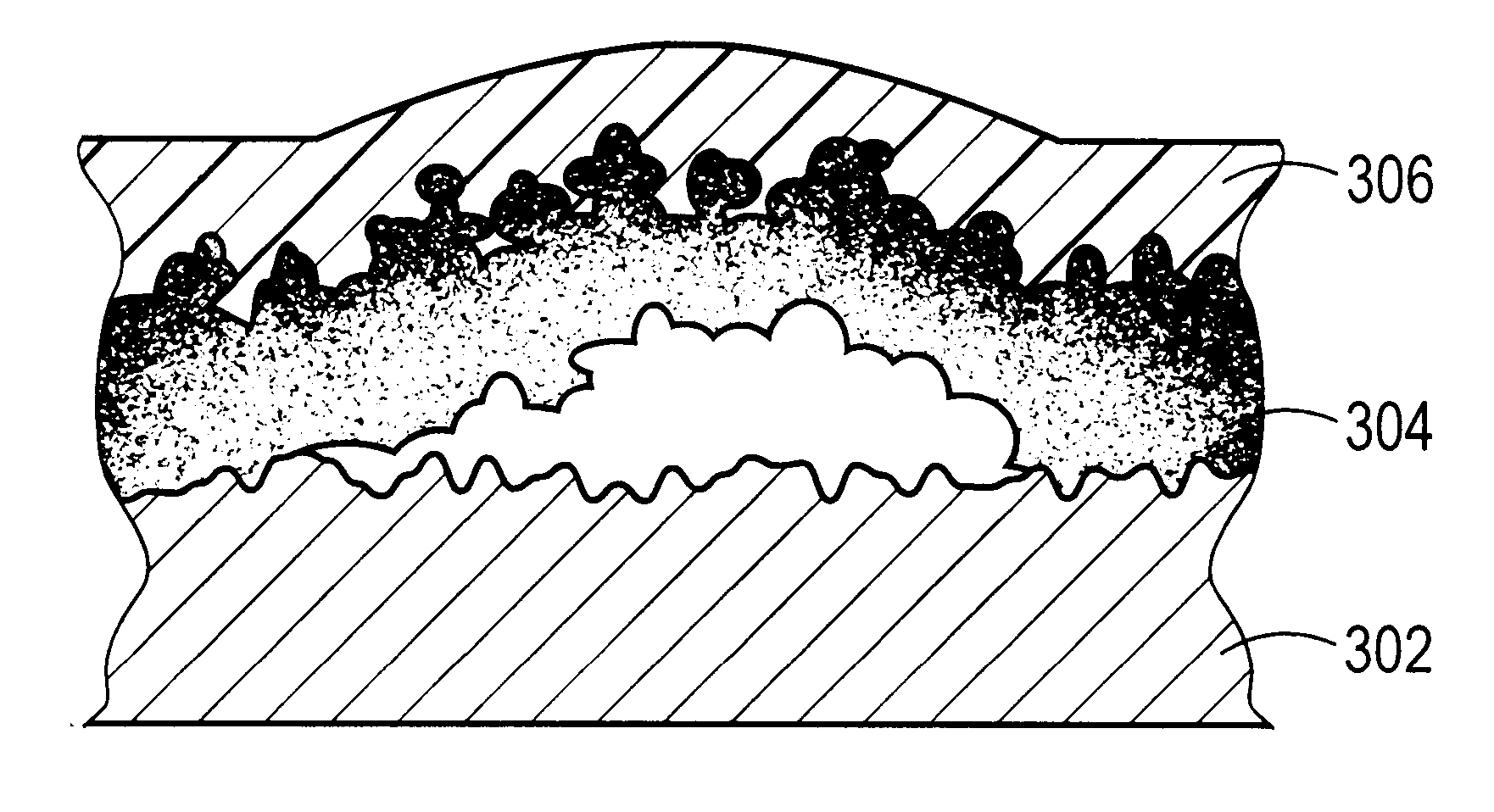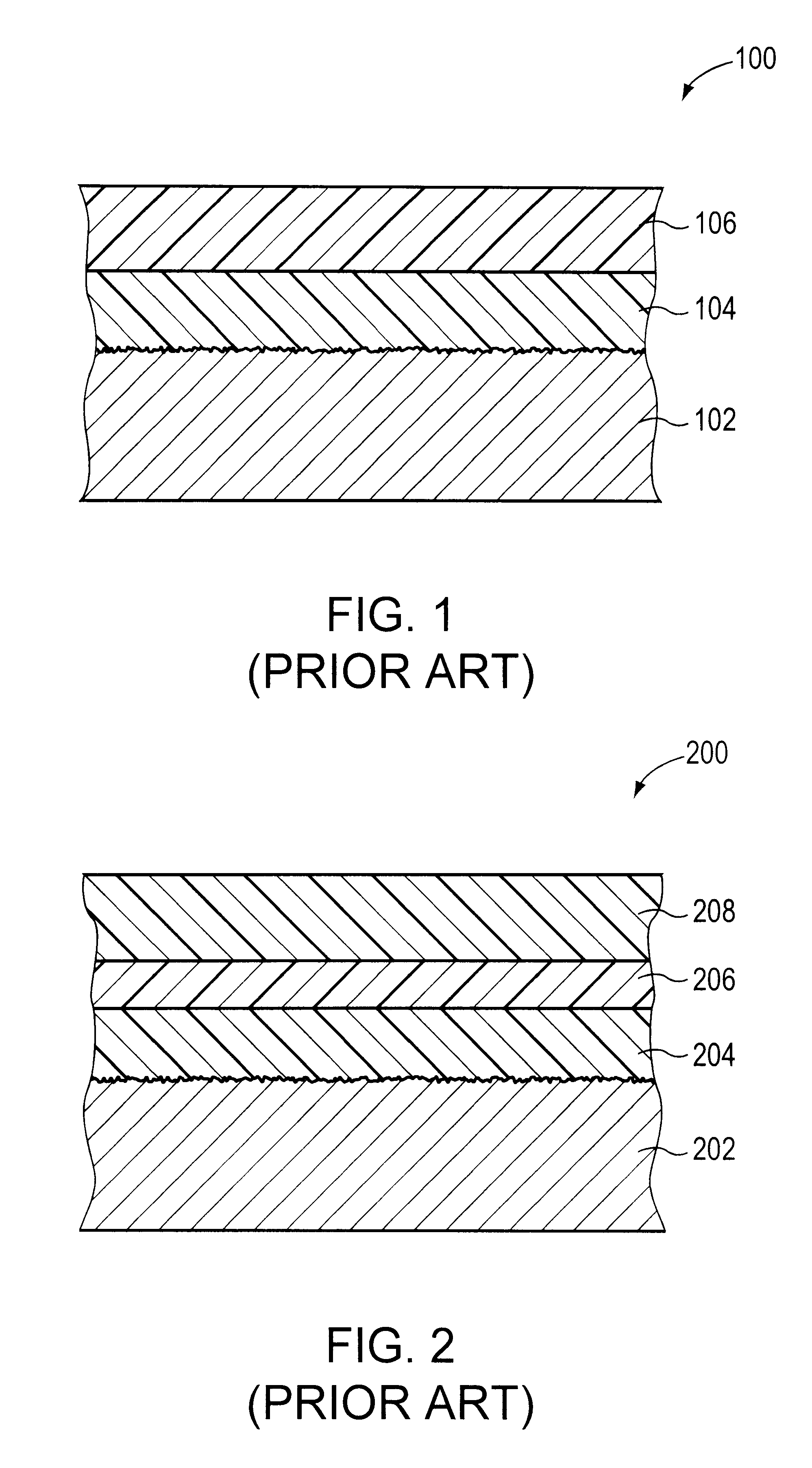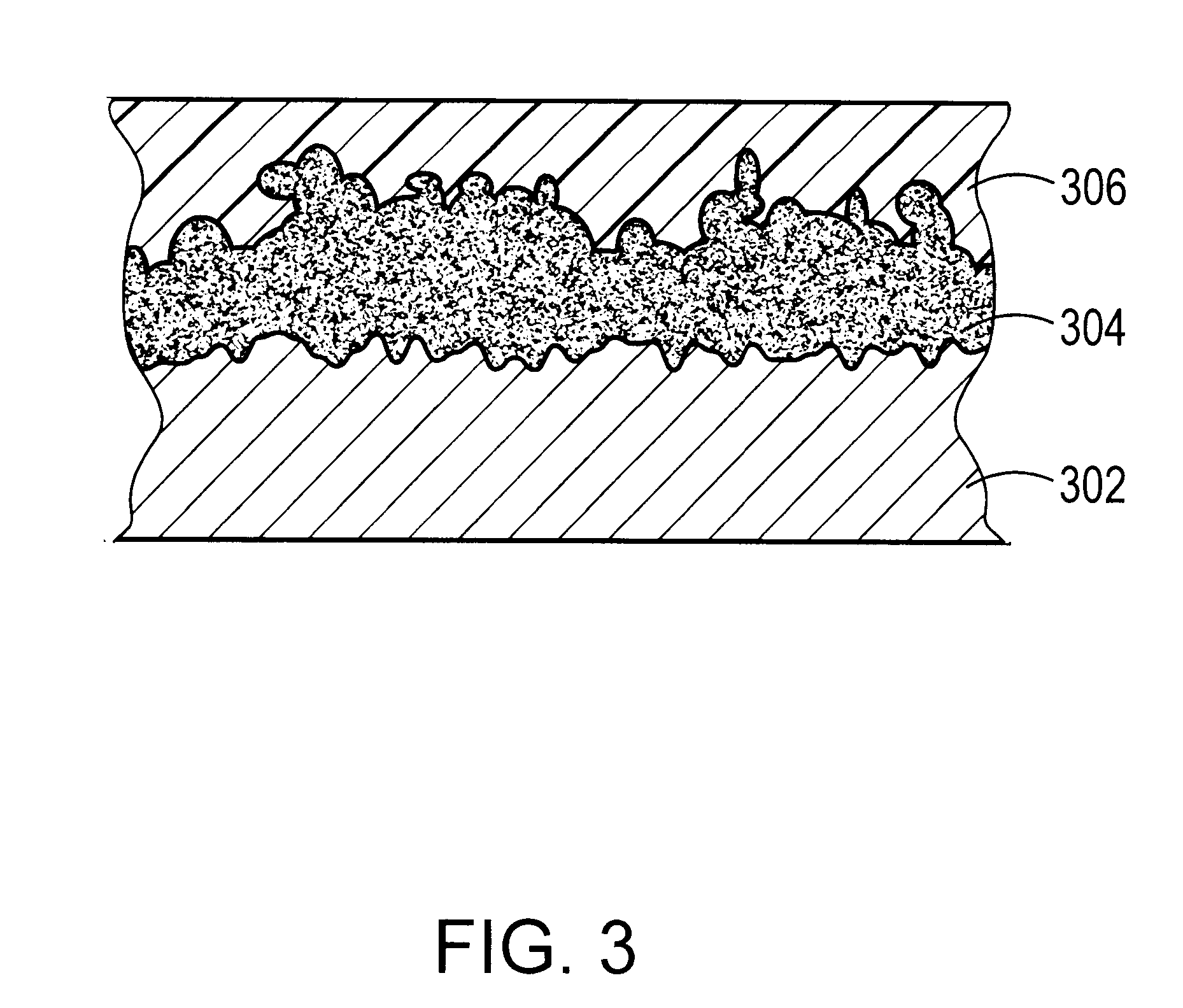Lithographic imaging with metal-based, non-ablative wet printing members
a technology of metal-based and non-ablative wet printing, applied in the direction of foil printing, plate printing, duplication/marking methods, etc., can solve the problems of ordinarily impossible image, impossible to image, etc., and achieve the effect of simple construction
- Summary
- Abstract
- Description
- Claims
- Application Information
AI Technical Summary
Benefits of technology
Problems solved by technology
Method used
Image
Examples
example 5
is optimal for coating over uniform layer 304 as described in Example 4. Cast and cured on this layer 304 or that described in Examples 1 / 3, the result is a black image on a light gray background (the color of the lithographic aluminum substrate 302). It is found that the layer 304 of Example 5 does not interact well with the dye-based construction of Examples 2 / 3. Example 6 may be cast and cured on layer 304 in accordance with Examples 1 / 3, but produces a light olive green image on a light gray background that may be difficult to assess for quality. Example 7, however, cast and cured on the formulation of Examples 1 / 3 provides a bright blue image easily distinguished over a gray background.
Numerous variations on these approaches are possible. For example, using lithographic aluminum as substrate 302, it is possible to apply, dry and cure a polyvinyl alcohol / BACOTE 20 coating containing NACURE 2530. The result is a hydrophilic coating containing free PTSA (p-toluene sulfonic acid); ...
PUM
| Property | Measurement | Unit |
|---|---|---|
| Thickness | aaaaa | aaaaa |
| Concentration | aaaaa | aaaaa |
| Electrical conductor | aaaaa | aaaaa |
Abstract
Description
Claims
Application Information
 Login to View More
Login to View More - R&D
- Intellectual Property
- Life Sciences
- Materials
- Tech Scout
- Unparalleled Data Quality
- Higher Quality Content
- 60% Fewer Hallucinations
Browse by: Latest US Patents, China's latest patents, Technical Efficacy Thesaurus, Application Domain, Technology Topic, Popular Technical Reports.
© 2025 PatSnap. All rights reserved.Legal|Privacy policy|Modern Slavery Act Transparency Statement|Sitemap|About US| Contact US: help@patsnap.com



